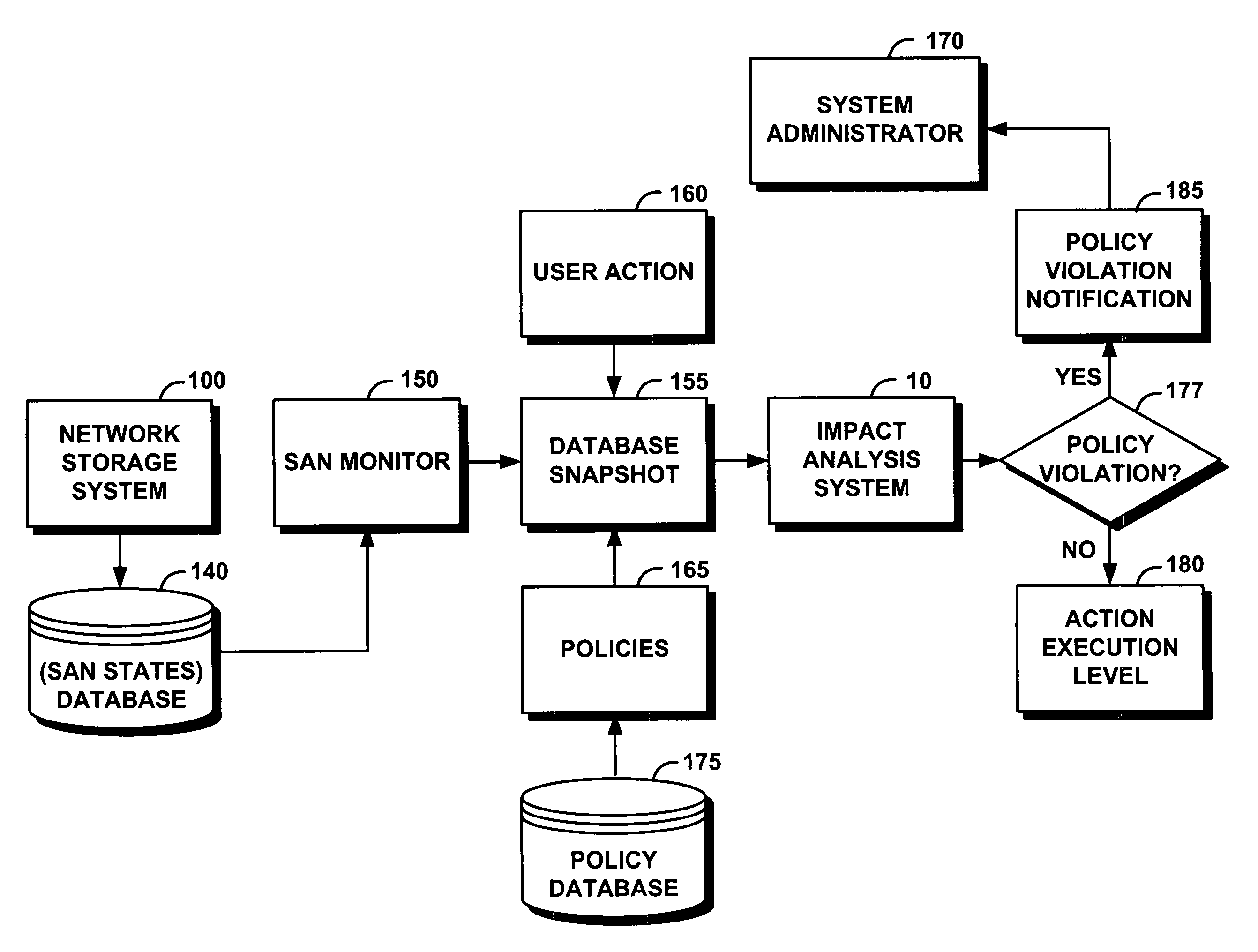Method for proactive impact analysis of policy-based storage systems
a technology of policy-based storage and impact analysis, applied in the field of network storage systems, can solve the problems of unintended consequences, rapid increase in the complexity of management of such network storage systems, and concomitant need for digital information managemen
- Summary
- Abstract
- Description
- Claims
- Application Information
AI Technical Summary
Benefits of technology
Problems solved by technology
Method used
Image
Examples
Embodiment Construction
[0027]FIG. 1 portrays an exemplary overall environment in which a system, a computer program product, and an associated method (the impact analysis system 10 or the “system 10”) for efficiently and proactively assessing the impact of users actions on a network storage system before the execution of these user actions, may be used according to the present invention. This environment includes, for example, a network storage system 100 (SAN) that generally comprises a variety of storage devices such as a plurality of interconnected RAID (Redundant Array of Independent Disks) drive storage devices 105 and a server cluster 110.
[0028]In one embodiment, the server cluster 110 includes heterogeneous servers, such as a file server 115, a database server 120, and an application server 125. The storage devices 105 and the server cluster 110 can be interconnected via a network 130 that enables a high speed communication among the network devices.
[0029]System 10 can reside on any component of th...
PUM
 Login to View More
Login to View More Abstract
Description
Claims
Application Information
 Login to View More
Login to View More - R&D
- Intellectual Property
- Life Sciences
- Materials
- Tech Scout
- Unparalleled Data Quality
- Higher Quality Content
- 60% Fewer Hallucinations
Browse by: Latest US Patents, China's latest patents, Technical Efficacy Thesaurus, Application Domain, Technology Topic, Popular Technical Reports.
© 2025 PatSnap. All rights reserved.Legal|Privacy policy|Modern Slavery Act Transparency Statement|Sitemap|About US| Contact US: help@patsnap.com



